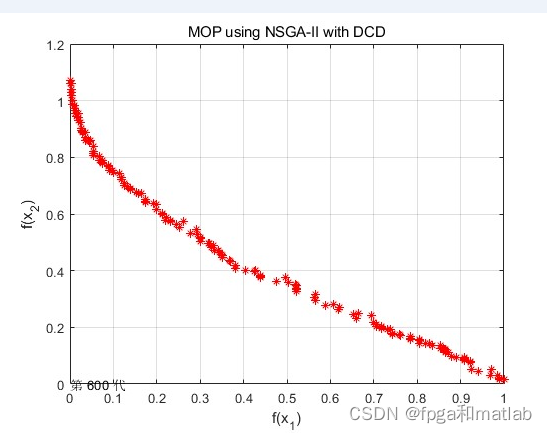mybatis常用标签
一.定义sql语句1.select 标签属性介绍:(1)id :唯一的标识符.(2)parameterType:传给此语句的参数的全路径名或别名 例:com.test.poso.User或user(3)resultType :语句返回值类型或别名。注意,如果是集合,那么这里填写的是集合的泛型,而不是集合本身(resultType 与resultMap 不能并用)<select id="sel

一.定义sql语句
1.select 标签
属性介绍:
(1)id :唯一的标识符.
(2)parameterType:传给此语句的参数的全路径名或别名 例:com.test.poso.User或user
(3)resultType :语句返回值类型或别名。注意,如果是集合,那么这里填写的是集合的泛型,而不是集合本身(resultType 与resultMap 不能并用)
<select id="selectByPrimaryKey" resultMap="BaseResultMap" parameterType="Object">
select * from student where id=#{id}
</select>
2.insert标签
属性介绍:
(1)id :唯一的标识符
(2)parameterType:传给此语句的参数的全路径名或别名 例:com.test.poso.User
<insert id="insertAgent" parameterType="Object">
INSERT INTO t_node_agent (host_name, os_type, created_date)
VALUES (#{hostName}, #{osType}, #{createdDate})
</insert>
3.delete标签
属性同 insert
<delete id="deleteByPrimaryKey" parameterType="Object">
delete from student where id=#{id}
</delete>
4.update标签
属性同 insert
<update id="updateOne" parameterType="com.inspur.search.data.EntityRelation">
update ENTITY_RELATION SET SRC_ID=#{srcId},SRC_TYPE=#{srcType},DEST_ID=#{destId},DEST_TYPE=#{destType},REL_TYPE=#{relType},STATUS=#{status},SN_ID=#{snId}
where id=#{id}
</update>
二.配置对象属性与查询结果集
1.resultMap 标签的使用
基本作用:建立SQL查询结果字段与实体属性的映射关系信息
查询的结果集转换为java对象,方便进一步操作
将结果集中的列与java对象中的属性对应起来并将值填充进去
注意:与java对象对应的列不是数据库中表的列名,而是查询后结果集的列名
<resultMap id="getStudentRM" type="EStudnet">
<id property="id" column="ID"/>
<result property="studentName" column="Name"/>
<result property="studentAge" column="Age"/>
</resultMap>
<select id="getStudent" resultMap="getStudentRM">
SELECT ID, Name, Age
FROM TStudent
</select>
标签说明:
主标签
(1)id:该resultMap的标志
(2)type:返回值的类名,此例中返回EStudnet类
子标签:
(1)id:用于设置主键字段与领域模型属性的映射关系,此处主键为ID,对应id。
(2)result:用于设置普通字段与领域模型属性的映射关系
三.动态拼接SQL
1.if 标签的使用
if标签通常用于WHERE语句中,通过判断参数值来决定是否使用某个查询条件, 他也经常用于UPDATE语句中判断是否更新某一个字段,还可以在INSERT语句中用来判断是否插入某个字段的值
<select id="getStudentListLikeName" parameterType="StudentEntity" resultMap="studentResultMap">
SELECT * from STUDENT_TBL ST
WHERE ST.STUDENT_NAME LIKE CONCAT(CONCAT('%', #{studentName}),'%')
</select>
但是此时如果studentName是null或空字符串,此语句很可能报错或查询结果为空。此时我们使用if动态sql语句先进行判断,如果值为null或等于空字符串,我们就不进行此条件的判断。
修改为:
<select id=" getStudentListLikeName " parameterType="StudentEntity" resultMap="studentResultMap">
SELECT * from STUDENT_TBL ST
<if test="studentName!=null and studentName!='' ">
WHERE ST.STUDENT_NAME LIKE CONCAT(CONCAT('%', #{studentName}),'%')
</if>
</select>
2.foreach 标签的使用
foreach标签主要用于构建in条件,他可以在sql中对集合进行迭代。如下:
<delete id="deleteBatch">
delete from user where id in
<foreach collection="array" item="id" index="index" open="(" close=")" separator=",">
#{id}
</foreach>
</delete>
我们假如说参数为---- int[] ids = {1,2,3,4,5} ----那么打印之后的SQL如下:
delete form user where id in (1,2,3,4,5)
释义:
(1)collection :collection属性的值有三个分别是list、array、map三种,分别对应的参数类型为:List、数组、map集合,我在上面传的参数为数组,所以值为array
item : 表示在迭代过程中每一个元素的别名
(2)index :表示在迭代过程中每次迭代到的位置(下标)
(3)open :前缀
(4)close :后缀
(5)separator :分隔符,表示迭代时每个元素之间以什么分隔
我们通常可以将之用到批量删除、添加等操作中。
3.choose 标签的使用
有时候我们并不想应用所有的条件,而只是想从多个选项中选择一个。MyBatis提供了choose 元素,按顺序判断when中的条件是否成立,如果有一个成立,则choose结束。当choose中所有when的条件都不满则时,则执行 otherwise中的sql。类似于Java 的switch 语句,choose为switch,when为case,otherwise则为default。
if是与(and)的关系,而choose是或(or)的关系。
例如下面例子,同样把所有可以限制的条件都写上,方面使用。选择条件顺序,when标签的从上到下的书写顺序:
<select id="getStudentListChooseEntity" parameterType="StudentEntity" resultMap="studentResultMap">
SELECT * from STUDENT_TBL ST
<where>
<choose>
<when test="studentName!=null and studentName!='' ">
ST.STUDENT_NAME LIKE CONCAT(CONCAT('%', #{studentName}),'%')
</when>
<when test="studentSex!= null and studentSex!= '' ">
AND ST.STUDENT_SEX = #{studentSex}
</when>
<when test="studentBirthday!=null">
AND ST.STUDENT_BIRTHDAY = #{studentBirthday}
</when>
<when test="classEntity!=null and classEntity.classID !=null and classEntity.classID!='' ">
AND ST.CLASS_ID = #{classEntity.classID}
</when>
<otherwise>
</otherwise>
</choose>
</where>
</select>
四.格式化输出
1.where
当if标签较多时,这样的组合可能会导致错误。例如,like姓名,等于指定性别等:
<!-- 查询学生list,like姓名,=性别 -->
<select id="getStudentListWhere" parameterType="StudentEntity" resultMap="studentResultMap">
SELECT * from STUDENT_TBL ST
WHERE
<if test="studentName!=null and studentName!='' ">
ST.STUDENT_NAME LIKE CONCAT(CONCAT('%', #{studentName}),'%')
</if>
<if test="studentSex!= null and studentSex!= '' ">
AND ST.STUDENT_SEX = #{studentSex}
</if>
</select>
如果上面例子,参数studentName为null或’’,则或导致此sql组合成“WHERE AND”之类的关键字多余的错误SQL。
这时我们可以使用where动态语句来解决。这个“where”标签会知道如果它包含的标签中有返回值的话,它就插入一个‘where’。此外,如果标签返回的内容是以AND 或OR 开头的,则它会剔除掉。
<!-- 查询学生list,like姓名,=性别 -->
<select id="getStudentListWhere" parameterType="StudentEntity" resultMap="studentResultMap">
SELECT * from STUDENT_TBL ST
<where>
<if test="studentName!=null and studentName!='' ">
ST.STUDENT_NAME LIKE CONCAT(CONCAT('%', #{studentName}),'%')
</if>
<if test="studentSex!= null and studentSex!= '' ">
AND ST.STUDENT_SEX = #{studentSex}
</if>
</where>
</select>
2.set
当在update语句中使用if标签时,如果前面的if没有执行,则或导致逗号多余错误。使用set标签可以将动态的配置SET 关键字,和剔除追加到条件末尾的任何不相关的逗号。
没有使用if标签时,如果有一个参数为null,都会导致错误,如下示例:
<!-- 更新学生信息 -->
<update id="updateStudent" parameterType="StudentEntity">
UPDATE STUDENT_TBL
SET STUDENT_TBL.STUDENT_NAME = #{studentName},
STUDENT_TBL.STUDENT_SEX = #{studentSex},
STUDENT_TBL.STUDENT_BIRTHDAY = #{studentBirthday},
STUDENT_TBL.CLASS_ID = #{classEntity.classID}
WHERE STUDENT_TBL.STUDENT_ID = #{studentID};
</update>
使用set+if标签修改后,如果某项为null则不进行更新,而是保持数据库原值。如下示例:
<!-- 更新学生信息 -->
<update id="updateStudent" parameterType="StudentEntity">
UPDATE STUDENT_TBL
<set>
<if test="studentName!=null and studentName!='' ">
STUDENT_TBL.STUDENT_NAME = #{studentName},
</if>
<if test="studentSex!=null and studentSex!='' ">
STUDENT_TBL.STUDENT_SEX = #{studentSex},
</if>
<if test="studentBirthday!=null ">
STUDENT_TBL.STUDENT_BIRTHDAY = #{studentBirthday},
</if>
<if test="classEntity!=null and classEntity.classID!=null and classEntity.classID!='' ">
STUDENT_TBL.CLASS_ID = #{classEntity.classID}
</if>
</set>
WHERE STUDENT_TBL.STUDENT_ID = #{studentID};
</update>
3.trim
trim是更灵活的去处多余关键字的标签,他可以实践where和set的效果。
where例子的等效trim语句:
<!-- 查询学生list,like姓名,=性别 -->
<select id="getStudentListWhere" parameterType="StudentEntity" resultMap="studentResultMap">
SELECT * from STUDENT_TBL ST
<trim prefix="WHERE" prefixOverrides="AND|OR">
<if test="studentName!=null and studentName!='' ">
ST.STUDENT_NAME LIKE CONCAT(CONCAT('%', #{studentName}),'%')
</if>
<if test="studentSex!= null and studentSex!= '' ">
AND ST.STUDENT_SEX = #{studentSex}
</if>
</trim>
</select>
set例子的等效trim语句:
<!-- 更新学生信息 -->
<update id="updateStudent" parameterType="StudentEntity">
UPDATE STUDENT_TBL
<trim prefix="SET" suffixOverrides=",">
<if test="studentName!=null and studentName!='' ">
STUDENT_TBL.STUDENT_NAME = #{studentName},
</if>
<if test="studentSex!=null and studentSex!='' ">
STUDENT_TBL.STUDENT_SEX = #{studentSex},
</if>
<if test="studentBirthday!=null ">
STUDENT_TBL.STUDENT_BIRTHDAY = #{studentBirthday},
</if>
<if test="classEntity!=null and classEntity.classID!=null and classEntity.classID!='' ">
STUDENT_TBL.CLASS_ID = #{classEntity.classID}
</if>
</trim>
WHERE STUDENT_TBL.STUDENT_ID = #{studentID};
</update>
五.配置关联关系
1.collection
一对一
association通常用来映射一对一的关系,例如,有个类user,对应的实体类如下:(getter,setter方法省略)
private String id;//主键
private String userName;//用户姓名
有个类Article,对应的实体类如下:
private String id;//主键
private String articleTitle;//文章标题
private String articleContent;//文章内容
如果我想查询一个用户的时候,也查到他写的一篇文章,可以怎样写呢?在类user加入一个属性article
private String id;//主键
private String userName;//用户姓名
private Article article;//新增的文章属性
mapper.xml 我在user类的mapper.xml这样配置
<resultMap id="userResultMap" type="test.mybatis.entity.User">
<id column="id" property="id" jdbcType="VARCHAR" javaType="java.lang.String"/>
<result column="userName" property="userName" jdbcType="VARCHAR" javaType="java.lang.String"/>
//这里把user的id传过去
<association property="article" column="id"
select="test.mybatis.dao.articleMapper.selectArticleByUserId" />//test.mybatis.dao.articleMapper为命名空间
</resultMap>
同时,我的article对应的xml这样写:
<resultMap id="articleResultMap" type="test.mybatis.entity.Article">
<id column="id" property="id" jdbcType="VARCHAR" javaType="java.lang.String"/>
<result column="articleTitle" property="articleTitle" jdbcType="VARCHAR" javaType="java.lang.String"/>
<result column="articleContent" property="articleContent" jdbcType="VARCHAR" javaType="java.lang.String"/>
</resultMap>
(当然,这里还有查询user表的语句,省略)
同时,在article对应的xml有这样的select语句:
<select id="selectArticleByUserId"
parameterType="java.lang.String"
resultMap="ArticleResultMap" >
select * from
tb_article where userId=#{userId} </select>
2.association
一对多
实体类增加对应属性
private String id;//主键
private String userName;//用户姓名
private List<Article> articleList;
userMapper.xml这样配置
<resultMap id="userResultMap" type="test.mybatis.entity.User">
<id column="id" property="id" jdbcType="VARCHAR" javaType="java.lang.String"/>
<result column="userName" property="userName" jdbcType="VARCHAR" javaType="java.lang.String"/>
//这里把user的id传过去
<collection property="articleList" column="id"
select="test.mybatis.dao.articleMapper.selectArticleListByUserId" />
</resultMap>
以下省略,类同,Mybatis会把结果封装成List类型。
如果我还想通过Article表另一张表,比如文章中有个fk_id,也可以像上面这样重复配置,把fk_id当做与另一张表关联的参数,那时就可以通过用户查到文章,查到文章关联的另一张表了
六.SQL标签
更多用于写sql语句的一部分,写在配置文件中的常量
七.include标签
用于引用常量
更多推荐
 已为社区贡献5条内容
已为社区贡献5条内容









所有评论(0)